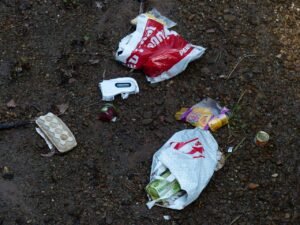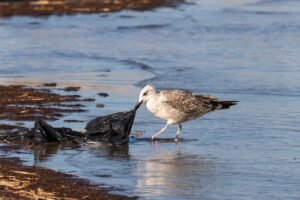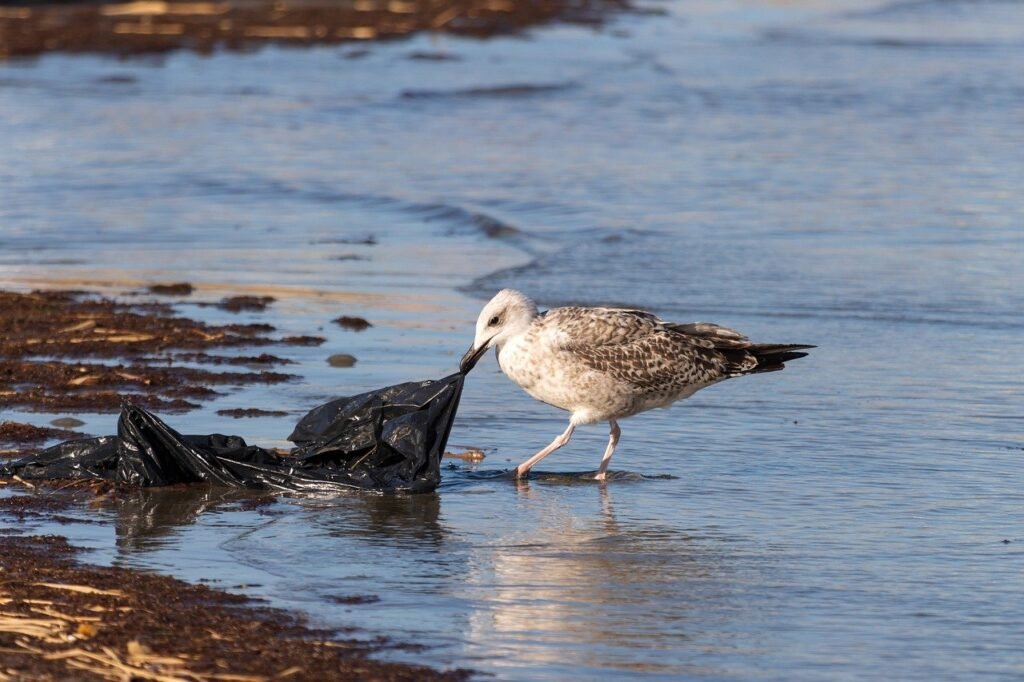Polybags, commonly known as plastic bags, have been a ubiquitous presence in daily life for decades. Despite their convenience, polybags have a significant environmental impact, which has been increasingly documented over the past 20 years. This article delves into the research-based data on the environmental effects of polybags and explores sustainable alternatives that can mitigate these impacts.
Environmental Impact of Polybags
1. Waste Accumulation and Landfill Space
Polybags are notorious for their persistence in the environment. According to a study by the Environmental Protection Agency (EPA), Americans use about 100 billion plastic bags annually, and only 1-5% of these are recycled. The rest end up in landfills, where they can take up to 1,000 years to decompose, emitting harmful chemicals into the soil and groundwater during this prolonged degradation process. 
2. Marine Pollution
A 2015 study published in the journal Science estimated that 8 million metric tons of plastic waste enter the oceans every year. Polybags contribute significantly to this pollution, posing severe threats to marine life. Sea turtles, for example, often mistake plastic bags for jellyfish, leading to ingestion and often fatal consequences. Furthermore, plastic debris can transport invasive species and toxins, disrupting marine ecosystems. 
3. Greenhouse Gas Emissions
The production and disposal of polybags contribute to greenhouse gas emissions. A 2011 report by the United Nations Environment Programme (UNEP) highlighted that the production of polyethylene (the most common polymer used in plastic bags) involves significant carbon dioxide emissions. Moreover, incineration of plastic waste, a common disposal method, releases toxic chemicals and additional greenhouse gases into the atmosphere.
4. Wildlife Harm
Wildlife, both terrestrial and aquatic, suffers from plastic bag pollution. Animals can become entangled in plastic bags, leading to injury or death. The ingestion of plastic fragments, which can block digestive tracts and cause malnutrition, is another widespread issue. A 2020 study in the journal Frontiers in Environmental Science detailed the impact of plastic ingestion on over 1,200 marine species.
Research-Based Data from the Last Two Decades
Over the past two decades, numerous studies have documented the rising tide of plastic pollution:
- 2004: A study in Nature reported the first estimates of global plastic production, highlighting the exponential growth of plastic waste since the 1950s.
- 2010: Researchers in Environmental Science & Technology found that plastic debris was ubiquitous in the world’s oceans, affecting even remote areas like the Arctic.
- 2018: The Science Advances journal published a comprehensive study showing that of the 8.3 billion metric tons of plastic produced to date, only 9% had been recycled, with the majority accumulating in landfills or the natural environment.
Sustainable Alternatives to Polybags
Given the environmental toll of polybags, exploring sustainable alternatives is crucial. Here are some viable options:
1. Reusable Bags
Reusable bags made from materials like cotton, jute, or recycled plastic are durable and can significantly reduce the need for single-use plastic bags. According to a study by the UK Environment Agency, a cotton bag must be used at least 131 times to offset its environmental impact compared to a single-use plastic bag. While the initial production of reusable bags may be resource-intensive, their long-term use makes them a more sustainable option.
2. Biodegradable Bags
Biodegradable bags, made from materials like cornstarch or polylactic acid (PLA), decompose more quickly than traditional plastic bags. A 2019 study in the journal Environmental Science & Technology found that certain biodegradable plastics can break down in marine environments within a year, reducing long-term pollution. However, these bags require specific conditions to decompose effectively, which are not always available in landfills or natural settings.
3. Compostable Bags
Compostable bags, made from organic materials, are designed to break down into non-toxic components under composting conditions. These bags meet stricter environmental standards and decompose more completely than biodegradable plastics. Research by the Biodegradable Products Institute (BPI) indicates that compostable bags can reduce landfill waste and enhance soil health when composted correctly. 
4. Paper Bags
Paper bags, while biodegradable and recyclable, have a higher environmental footprint during production compared to plastic bags. A life cycle assessment study published in The International Journal of Life Cycle Assessment showed that paper bags need to be reused at least three times to match the carbon footprint of a single-use plastic bag . Nonetheless, paper bags offer a more sustainable end-of-life scenario, as they break down more quickly and without harmful residues. 
The environmental impact of polybags is profound and multifaceted, affecting landfills, marine life, and wildlife, and contributing to greenhouse gas emissions. Over the past two decades, research has underscored the urgent need to address plastic pollution. Transitioning to sustainable alternatives such as reusable, biodegradable, compostable, and paper bags can significantly mitigate these impacts. Collective efforts from consumers, policymakers, and industries are essential to drive the shift towards a more sustainable future.
References:
- Environmental Protection Agency (EPA). (n.d.). “Plastic Bag Pollution.”
- Jambeck, J. R., et al. (2015). “Plastic waste inputs from land into the ocean.” Science.
- United Nations Environment Programme (UNEP). (2011). “Plastic Debris in the Ocean.”
- Gall, S. C., & Thompson, R. C. (2020). “The impact of debris on marine life.” Frontiers in Environmental Science.
- Thompson, R. C., et al. (2004). “Lost at Sea: Where is all the Plastic?” Science.
- Barnes, D. K. A., et al. (2010). “Accumulation and fragmentation of plastic debris in global environments.” Environmental Science & Technology.
- Geyer, R., Jambeck, J. R., & Law, K. L. (2018). “Production, use, and fate of all plastics ever made.” Science Advances.
- UK Environment Agency. (2011). “Life cycle assessment of supermarket carrier bags.”
- Gewert, B., Plassmann, M. M., & MacLeod, M. (2019). “Pathways for degradation of plastic polymers floating in the marine environment.” Environmental Science & Technology.
- Biodegradable Products Institute (BPI). (n.d.). “Compostable Plastics.”
- Hekkert, M. P., et al. (2002). “Life cycle assessment and the use of renewable resources: a case study of nappies and bio-based car parts.” The International Journal of Life Cycle Assessment.

